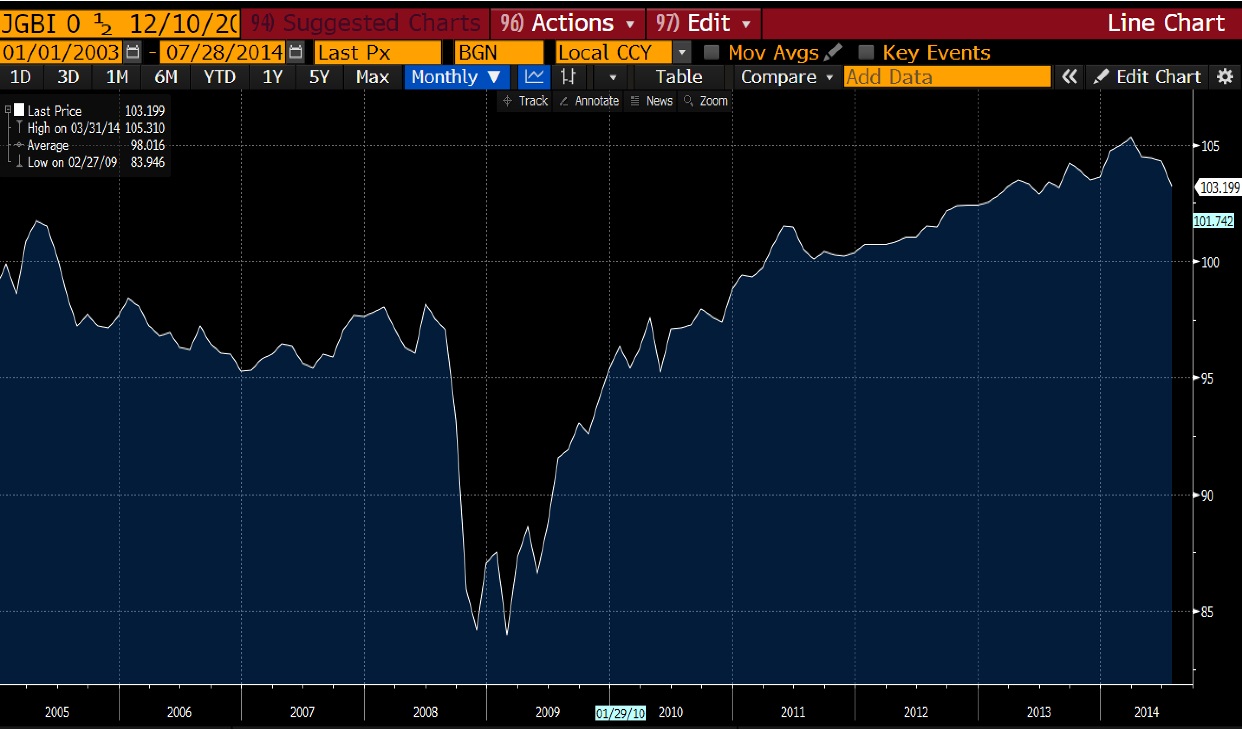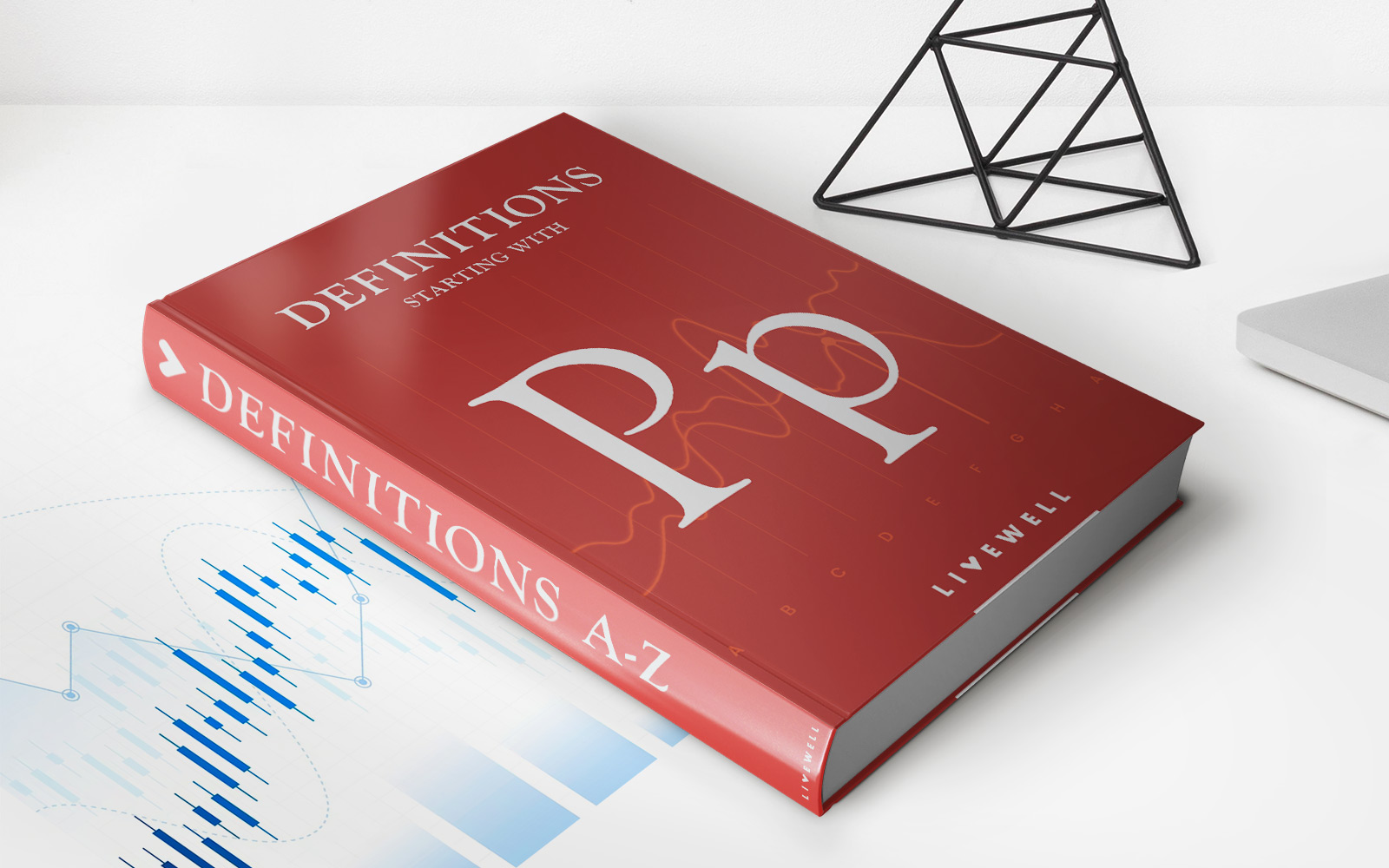

Finance
Why Are Inflation-Linked Bonds Falling?
Published: October 19, 2023
Find out why inflation-linked bonds are experiencing a decline in value. Explore the impact of finance on this trend and stay informed about market fluctuations.
(Many of the links in this article redirect to a specific reviewed product. Your purchase of these products through affiliate links helps to generate commission for LiveWell, at no extra cost. Learn more)
Table of Contents
Introduction
Inflation-Linked Bonds, also known as Treasury Inflation-Protected Securities (TIPS), are fixed-income securities that offer protection against inflation. These bonds have gained popularity among investors seeking to hedge against the erosion of purchasing power caused by rising prices. However, in recent times, there has been a noticeable decline in the prices of inflation-linked bonds, leaving investors puzzled. In this article, we will explore the reasons behind this fall and its implications for investors.
To understand the current state of inflation-linked bonds, it is crucial to grasp the concept of inflation and its impact on the economy. Inflation refers to the gradual increase in the prices of goods and services over time. When inflation rises, the value of money decreases, leading to a decline in purchasing power. This phenomenon can erode the returns on traditional fixed-income investments.
Inflation-linked bonds were introduced as a solution to combat the adverse effects of inflation on bond investments. Unlike conventional bonds, inflation-linked bonds provide a shield against inflation by adjusting their principal and interest payments based on changes in the Consumer Price Index (CPI) or other inflation indices. This ensures that investors receive a real return on their investment, even during periods of high inflation.
The appeal of inflation-linked bonds lies in their ability to offer protection against inflationary pressures. As inflation rates rise, the value of these bonds increases, providing investors with a hedge against rising prices. Additionally, these bonds also offer a fixed interest rate, providing a predictable income stream for investors.
Despite their benefits, inflation-linked bonds have experienced a significant decline in prices recently. This unexpected trend has left many investors wondering about the underlying reasons. Various factors have contributed to the fall in inflation-linked bonds, including changes in inflation expectations, monetary policy shifts, and market sentiment.
In the next sections, we will delve deeper into these factors and explore the reasons behind the recent decline in the prices of inflation-linked bonds. By understanding these dynamics, investors can make informed decisions regarding their bond portfolios and navigate the changing market conditions.
Understanding Inflation-Linked Bonds
Inflation-linked bonds, as the name suggests, are bonds that are designed to protect investors against inflation. These bonds are issued by governments and their principal and interest payments are adjusted based on changes in the Consumer Price Index (CPI) or other inflation indices. This means that, unlike traditional bonds, the value of inflation-linked bonds increases with inflation.
The main feature that distinguishes inflation-linked bonds from conventional bonds is the inflation adjustment mechanism. This adjustment is typically made on a semi-annual basis and is based on the percentage change in the inflation index. As a result, the principal value of the bond increases in line with inflation, ensuring that investors receive a real return on their investment.
Another key component of inflation-linked bonds is the fixed interest rate. Similar to conventional bonds, inflation-linked bonds offer a predetermined interest rate that remains constant throughout the bond’s life. This provides investors with a predictable income stream and helps protect against fluctuations in interest rates.
One important aspect to note about inflation-linked bonds is that their interest payments are based on the adjusted principal value. As the principal value of the bond increases with inflation, the interest payments also increase accordingly. This ensures that the real purchasing power of the interest income remains consistent over time.
Investors can purchase inflation-linked bonds either directly from the government or from secondary markets. These bonds are typically issued with a fixed maturity period, ranging from a few years to several decades. Upon maturity, investors receive the adjusted principal amount along with the final interest payment.
Inflation-linked bonds are considered a relatively low-risk investment option due to their built-in protection against inflation. This makes them attractive to investors who are concerned about preserving the value of their investment in times of rising prices. Additionally, inflation-linked bonds can serve as a diversification tool in a balanced investment portfolio, providing stability and a hedge against inflationary pressures.
However, it is worth noting that inflation-linked bonds may have lower initial yields compared to conventional bonds. This is because the inflation protection feature comes at a cost to the issuer. Issuing these bonds requires the government to allocate additional funds to cover the potential increase in principal and interest payments. As a result, the fixed interest rate offered on inflation-linked bonds may be slightly lower than on traditional bonds of similar maturity.
Overall, inflation-linked bonds provide investors with a unique investment option that offers protection against inflation. By understanding the mechanisms and features of these bonds, investors can make informed decisions regarding their investment portfolios and effectively manage the impact of inflation on their investments.
Factors Influencing Inflation-Linked Bonds
The prices of inflation-linked bonds are influenced by various factors that impact investor sentiment and market dynamics. Understanding these factors can help shed light on why inflation-linked bonds may experience fluctuations in their prices. Here are some key factors to consider:
- Inflation Expectations: Inflation-linked bonds are closely tied to inflation expectations. If investors anticipate higher inflation in the future, they may demand higher yields on inflation-linked bonds, leading to a decrease in their prices. Conversely, if inflation expectations are low, the demand for inflation-linked bonds may increase, driving up their prices.
- Interest Rates: Changes in interest rates also impact the prices of inflation-linked bonds. When interest rates rise, the fixed interest payments offered by inflation-linked bonds may become less attractive compared to other investment options. As a result, investors may sell their inflation-linked bonds, causing their prices to decline.
- Market Sentiment: General market sentiment and risk appetite can affect the demand for inflation-linked bonds. In periods of economic uncertainty or market volatility, investors may move towards safer assets, causing increased demand for inflation-linked bonds. Conversely, during periods of economic stability and confidence, investors may prefer riskier assets, leading to decreased demand for inflation-linked bonds.
- Monetary Policy: The actions of central banks and changes in monetary policy can have a significant impact on inflation-linked bond prices. If a central bank tightens monetary policy to control inflation, the demand for inflation-linked bonds may increase as investors seek protection against rising prices. On the other hand, if a central bank adopts an accommodative monetary policy, the demand for inflation-linked bonds may decrease, resulting in lower prices.
- Macroeconomic Factors: Various macroeconomic factors, such as GDP growth, employment rates, and fiscal policy, can influence the prices of inflation-linked bonds. Positive economic indicators may lead to higher inflation expectations and increased demand for these bonds, pushing prices higher. Conversely, negative economic factors can dampen inflation expectations and result in lower prices.
It’s important to note that these factors interact with each other and can have cumulative effects on the prices of inflation-linked bonds. A combination of changing inflation expectations, interest rates, market sentiment, and monetary policy can lead to significant fluctuations in the prices of these bonds.
Investors should keep a close eye on these factors and monitor their impact on inflation-linked bond prices. By staying informed and understanding the dynamics at play, investors can make informed decisions and take advantage of potential opportunities in the market.
Reasons for the Fall in Inflation-Linked Bonds
The recent decline in the prices of inflation-linked bonds can be attributed to several key factors that have affected market dynamics and investor sentiment. Understanding these reasons can provide insights into the current state of inflation-linked bonds. Here are some of the main reasons behind the fall:
- Decrease in Inflation Expectations: One of the primary drivers of inflation-linked bond prices is inflation expectations. If investors anticipate lower inflation in the future, they may demand higher yields on these bonds. In recent times, concerns about deflationary pressures, economic slowdowns, and global uncertainties have caused a decrease in inflation expectations. As a result, the prices of inflation-linked bonds have fallen.
- Central Bank Policies: The monetary policies implemented by central banks can significantly impact inflation-linked bond prices. Central banks have the power to influence interest rates and inflation through their policy decisions. In periods of economic weakness, central banks often adopt accommodative monetary policies, which can lead to lower inflation expectations. This, in turn, can cause a decline in inflation-linked bond prices.
- Changes in Interest Rates: Interest rates play a crucial role in determining the attractiveness of inflation-linked bonds. When interest rates rise, the fixed interest payments provided by these bonds may become less appealing compared to other investment opportunities. As a result, investors may sell their inflation-linked bonds, leading to a decrease in their prices.
- Shift in Investor Sentiment: Investor sentiment can greatly influence the demand for inflation-linked bonds. During periods of economic uncertainty or market volatility, investors often seek safe-haven investments that can provide protection against potential losses. However, when market sentiment improves, investors may shift towards riskier assets, leading to a decrease in demand for inflation-linked bonds and a subsequent fall in their prices.
- Increased Supply of Inflation-Linked Bonds: The supply and demand dynamics of inflation-linked bonds can also impact their prices. If there is a significant increase in the issuance of these bonds, the market may become saturated, leading to a decline in prices. This can occur when governments issue a large number of inflation-linked bonds to finance budget deficits or when investors’ appetite for these bonds decreases.
It is important to note that the fall in inflation-linked bond prices is not an isolated phenomenon and can be influenced by a combination of these factors. Additionally, each market may have its own unique circumstances and influences that contribute to the decline.
Investors should stay informed about these factors and regularly monitor market conditions to make informed decisions regarding their investments in inflation-linked bonds. Understanding the reasons behind the fall can help investors navigate the market and potentially capitalize on opportunities that may arise in the future.
Impact on Investors
The fall in the prices of inflation-linked bonds can have significant implications for investors. Understanding the impact of this decline is crucial for investors who hold or are considering investing in these bonds. Here are some key effects to consider:
- Capital Losses: The primary consequence of the fall in inflation-linked bond prices is the potential for capital losses. If an investor sells their bonds during a period of declining prices, they may receive less than the initial investment amount. This can result in a negative return on investment.
- Reduced Inflation Protection: Inflation-linked bonds are sought after by investors looking for protection against inflation. However, a fall in prices can undermine the effectiveness of this protection. If inflation-linked bond prices decline while inflation remains steady or rises, investors may not fully benefit from the intended inflation hedge.
- Income Consequences: The decline in inflation-linked bond prices can also impact the income generated from these bonds. If an investor holds these bonds for the long term, the fixed interest payments typically remain constant. However, if the bond prices fall, the yield or income generated relative to the initial investment amount will decrease. This can have implications on the investor’s overall income stream.
- Portfolio Performance: For investors who include inflation-linked bonds in their investment portfolios, the decline in prices can impact the overall performance of the portfolio. If the allocation to inflation-linked bonds is significant, the decline in their prices can drag down the overall returns of the portfolio. It is important for investors to regularly monitor and rebalance their portfolios to mitigate potential negative impacts.
- Opportunities for Bargain Hunting: While the fall in inflation-linked bond prices may represent challenges for some investors, it can also present opportunities for others. Investors who have a longer-term investment horizon and a bullish view on inflation may see the decline as a potential buying opportunity. They can acquire inflation-linked bonds at lower prices, positioning themselves for potential capital gains in the future if prices rebound.
Given the potential impact on investors, it is crucial to evaluate individual investment goals, risk tolerance, and time horizons when considering investments in inflation-linked bonds. Investors should also diversify their portfolios to include a mix of different asset classes to mitigate risks associated with any single investment.
It is recommended that investors consult with financial advisors or professionals who can provide personalized guidance based on their specific circumstances and objectives. Staying informed about market conditions and regularly monitoring the performance of inflation-linked bonds can also help investors make informed decisions and adapt their strategies as needed.
Conclusion
The recent fall in the prices of inflation-linked bonds has raised concerns among investors seeking protection against inflation. While the decline can be attributed to factors such as decreased inflation expectations, changes in interest rates, market sentiment, and central bank policies, it is important for investors to understand the implications of this trend.
Investors holding inflation-linked bonds may see a decrease in their capital value, resulting in potential capital losses. Additionally, the effectiveness of these bonds as a hedge against inflation may be diminished during a period of falling prices. The income generated from inflation-linked bonds may also be affected, as the yield relative to the initial investment amount decreases.
Despite these challenges, the fall in inflation-linked bond prices may present opportunities for investors with a bullish view on inflation. They can take advantage of lower prices to potentially benefit from future capital gains.
Investors should carefully evaluate their investment goals, risk tolerance, and time horizons when considering investments in inflation-linked bonds. Diversification and regular portfolio monitoring are essential to mitigate risks associated with any single investment.
Consultation with financial advisors or professionals is recommended to receive personalized guidance based on individual circumstances. Staying informed about market conditions and understanding the factors influencing inflation-linked bond prices can help investors make informed decisions and adapt their strategies as needed.
While the recent fall in inflation-linked bond prices may present challenges, it is important to approach the situation with a long-term perspective. Market conditions and investor sentiments can change, and the prices of inflation-linked bonds may experience fluctuations in the future. By staying informed and making informed decisions, investors can navigate the dynamics of inflation-linked bonds and position themselves for potential opportunities in the market.














